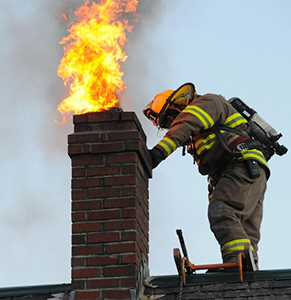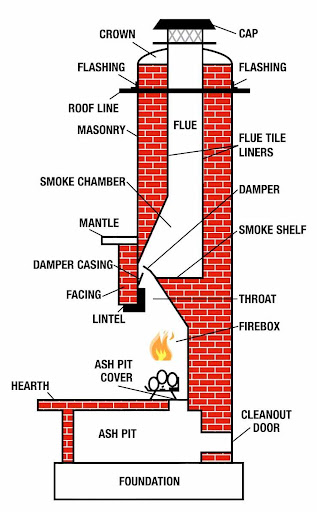Chimney Fires Blog Series
Firefighters and emergency fire responders need to be prepared for all types of fire emergencies. As we move into fall and winter, chimney fires are a dangerous type of house fire that firefighters and fire departments need to prepare and train for.
In part one of our Chimney Fires blog series, we will discuss what qualifies as a chimney fire and the importance of knowing the differences between fireplace and stove construction.
What Is A Chimney Fire?
Simply put, a chimney fire is a fire burning leftover soot or creosote, an oily and black residue of chemicals from previously burned fire fuel, remaining in a chimney, the flue, stove pipes, or chimney tiles.
Chimney fires are categorized by explosive burning and a low, noisy rumble. These fires burn at extreme temperatures and produce thick, turbulent smoke. Because of the heat intensity of chimney fires, they can create cracks in thimbles, cracks in flue pipes, overall chimney damage, smoke damage to the building, and roof or attic damage.
Chimney Fires Cover A Wide Range of Stoves and Fireplaces Including:
- Fireplaces
- Pellet Stoves
- Wood Burning Stoves
Understanding Different Types of Fireplaces & Stoves
In order to properly eliminate a dangerous fire, firefighters need to have an understanding of the anatomy of the stove or fireplace in question. At a base level, all fireplaces and stoves consist of a firebox, the inner section where the material is lit and burns, a chimney flue lined with metal or tile, and usually a cap, or covering, over the exit opening to reduce debris or small animals from entering the flue.
Fireplaces and stoves can be constructed with brick, stone, metal, terracotta, or a mix. These materials behave differently under extreme heat and have different durabilities and conductive properties. It is important that firefighters know the design of the fireplace or stove so they can calculate the burn and heat risks for their team and the possibility of the chimney fire impacting the building.
Because of the way fireplaces and stoves are shaped, there will oftentimes be leftover combustible material in the firebox which leads to the formation of creosote. Unseasoned softwoods create the most creosote and buildings with exterior chimneys tend to build up more creosote because they are difficult to keep warm.
Creosote Forms From:
- Incomplete Combustion of Materials
- Gases Condensing on Cool Surfaces
- Burning Wet Wood
If chimneys are left uncleaned or inspected for several years with regular use, damage and creosote buildup can go undetected. If fireplace or stove temperatures reach 2000℉, the extreme heat will start to break down masonry work and brick and mortar integrity will fail. At those temperatures, cracks will also start to form in terracotta linings and metal chimneys can warp at the seams and crack welding spots.
Because creosote buildup is located in the chimney flue and cannot be seen, many people forgo cleanings and inspections. However, that can lead to dangerous consequences later on. The NFPA Standard 211 suggests that chimneys should be cleaned and inspected once per year to ensure they are safe, free from harmful buildup, and without damage.
Chimney fires can be just as dangerous as a house fire and should be responded to as such. As colder weather approaches, the occurrence of chimney fires will increase so it is essential that fire departments are ready and have the proper knowledge to respond to the emergency.
In addition to his leadership role at Ward Fire Equipment,
John May has more than 30 years of experience in the Fire Service. John is a Level I & II Fire instructor in the State of NY.



